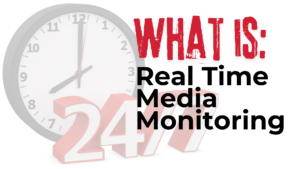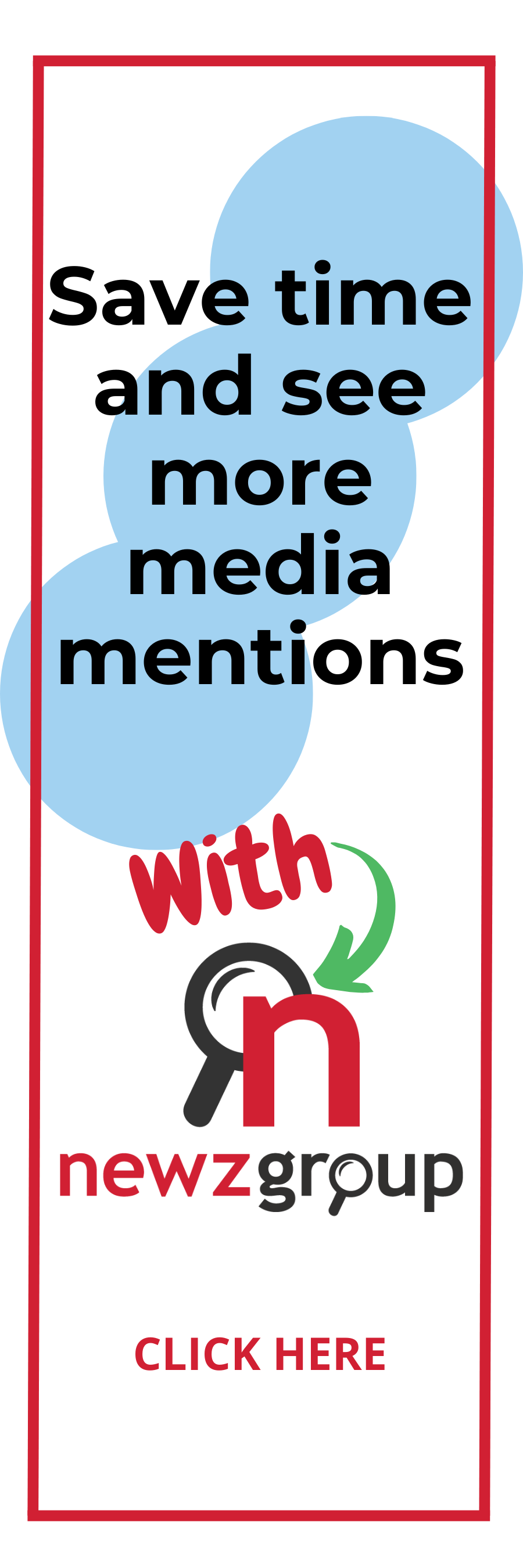
What is Real-Time Media Monitoring?
Quick explanation:
Real-time media monitoring constantly searches online news, social media, and Broadcast TV/radio for mentions of topics important to your organization.
Real Time Media Monitoring Setup
Identify what’s important
Your account set up starts with identifying what your media monitoring goals are. To achieve your goals, identify and select the keywords or topics that are most important to your organization. Then you can determine which media channels are needed: online, social media, or broadcast.
Example:
Goal: Improve customer service satisfaction
Keywords: Your company name and brand names
Media Channel(s): Social Media
In this example your focus was to respond quickly to customer concerns related to your organization and brands across social media platforms.
Benefits of Real Time Media Monitoring
Benefits
It’s time-consuming and impossible to manually monitor your mentions around the clock, so automating this process will free up you or your employees’ time and provide deeper insight.
Ever wanted to know your coverage impact? Real-time media monitoring allows you to see the analytics for your mentions. Analytics will be specific to the media channel (online, social media, broadcast) but typically include: reach, visits, unique users, Ad Value Equivalency (AVE), interactions, likes, comments, replies, shares.
Here’s a breakdown of some key advantages for different goals:
- Brand Reputation Management:
- Quickly detect and respond to negative mentions or potential crises, minimizing damage to your brand’s image.
- Track positive mentions and identify opportunities to amplify positive sentiment.
- Allows for proactive management of the public narrative surrounding your brand.
- Crisis Management:
- Receive immediate alerts about emerging issues, enabling swift and effective responses.
- Monitor the spread of information during a crisis to understand public perception and adjust communication strategies.
- Competitive Analysis:
- Track competitors’ activities, marketing campaigns, and public perception.
- Identify competitive strengths and weaknesses, allowing for strategic adjustments.
- Stay informed about industry trends and competitor innovations.
- Market Research:
- Gain insights into customer preferences, behaviors, and emerging trends.
- Understand how your target audience perceives your brand and products.
- Identify opportunities for product development and marketing optimization.
- Customer Engagement:
- Monitor customer feedback and address concerns promptly.
- Identify and engage with brand advocates and influencers.
- Foster stronger customer relationships through personalized interactions.
- Influencer Identification:
- Find key opinion leaders related to your industry.
- Monitor the reach and engagement of potential influencers.
- Facilitate strategic partnerships for amplified messaging.
- Trend Identification:
- Discover emerging trends in your industry.
- Capitalize on trends for marketing and content creation.
- Keep your business relevant and ahead of the curve.
- Improved PR and Marketing Effectiveness:
- Measure the impact of PR and marketing campaigns in real-time.
- Make data-driven decisions to optimize campaign performance.
- Identify which messages and channels resonate most with your audience.
In essence, real-time media monitoring empowers organizations to stay informed, responsive, and proactive in today’s dynamic media landscape.
Learn more about media monitoring: https://blog.newzgroup.com/





